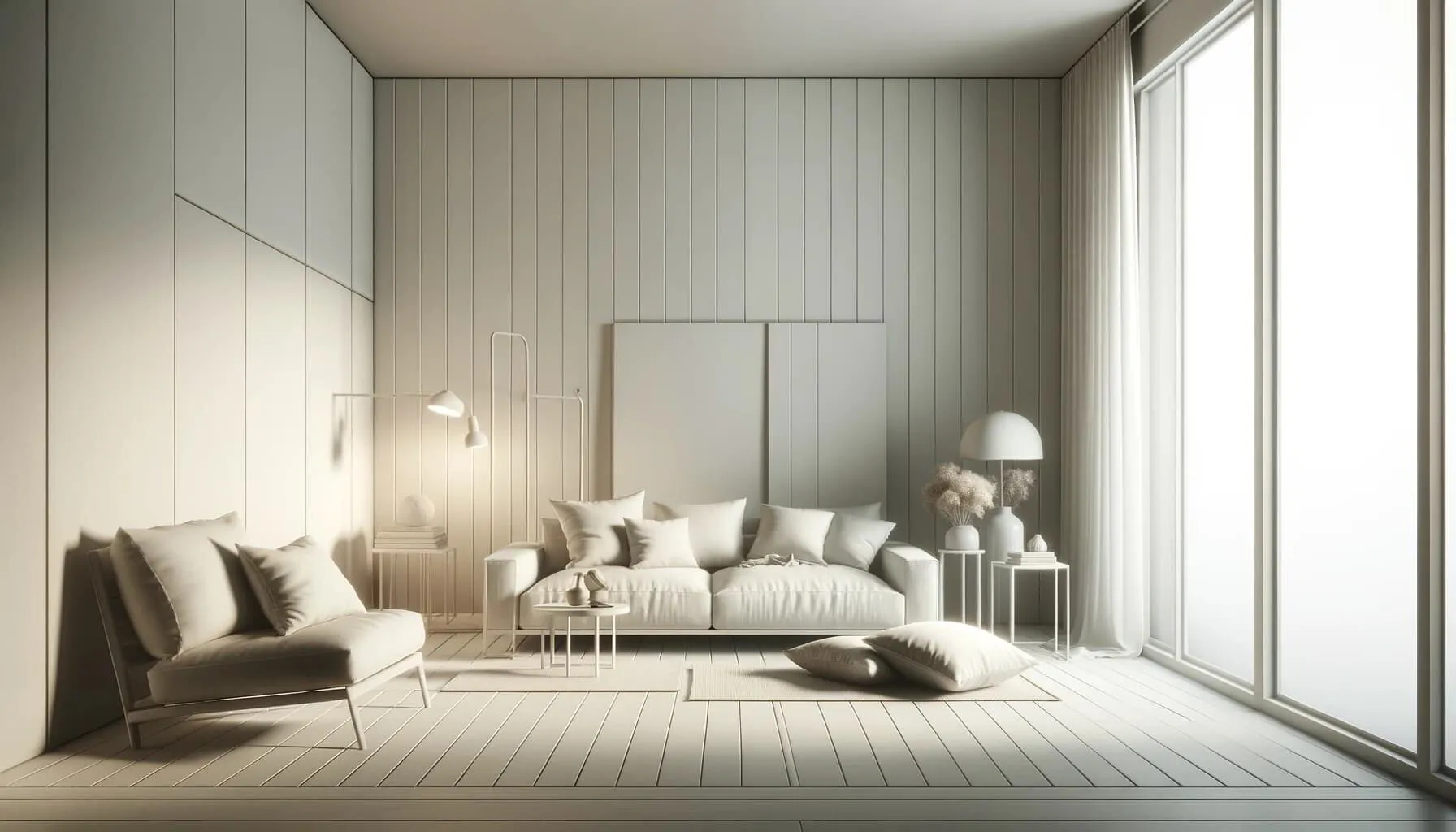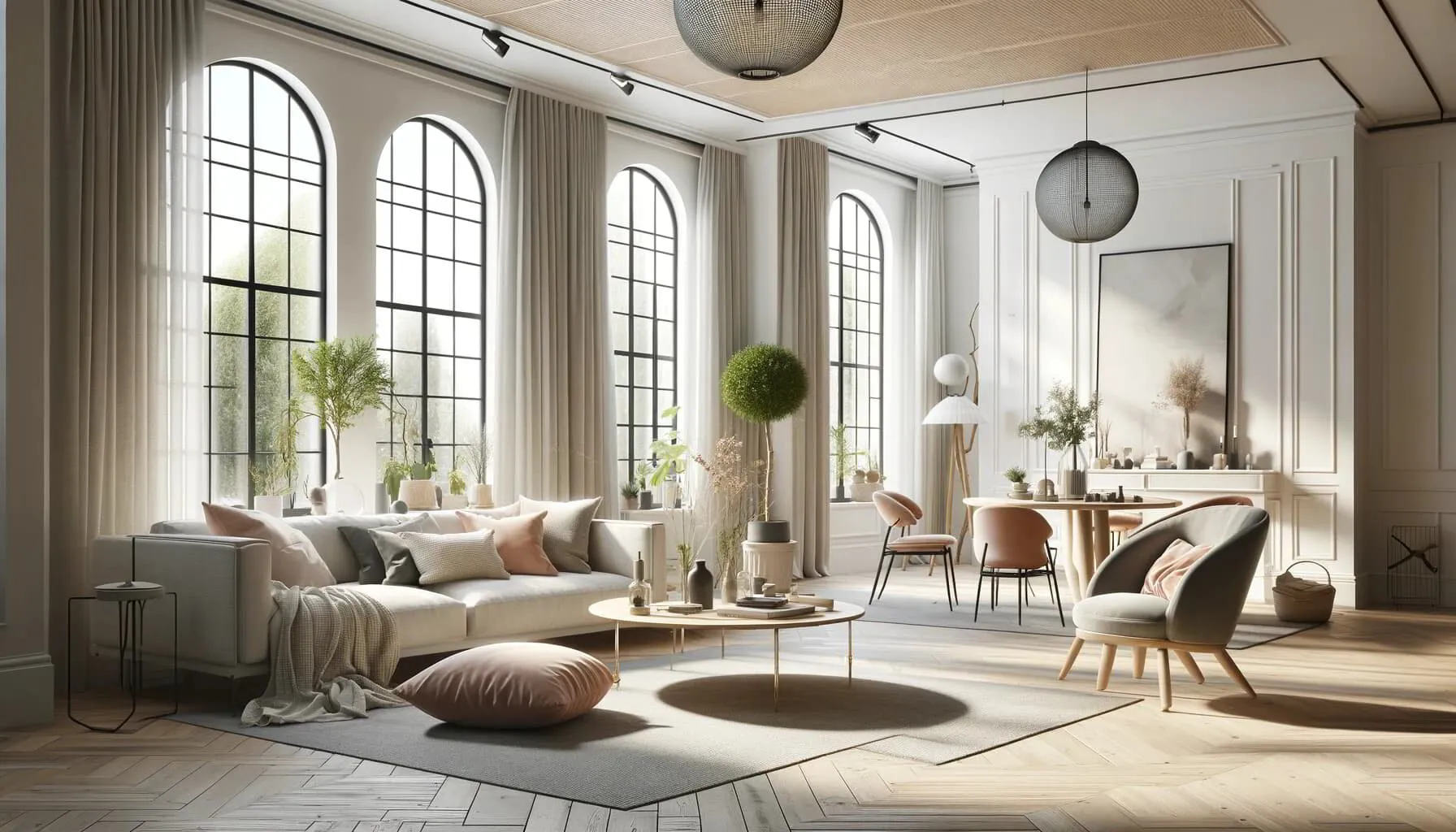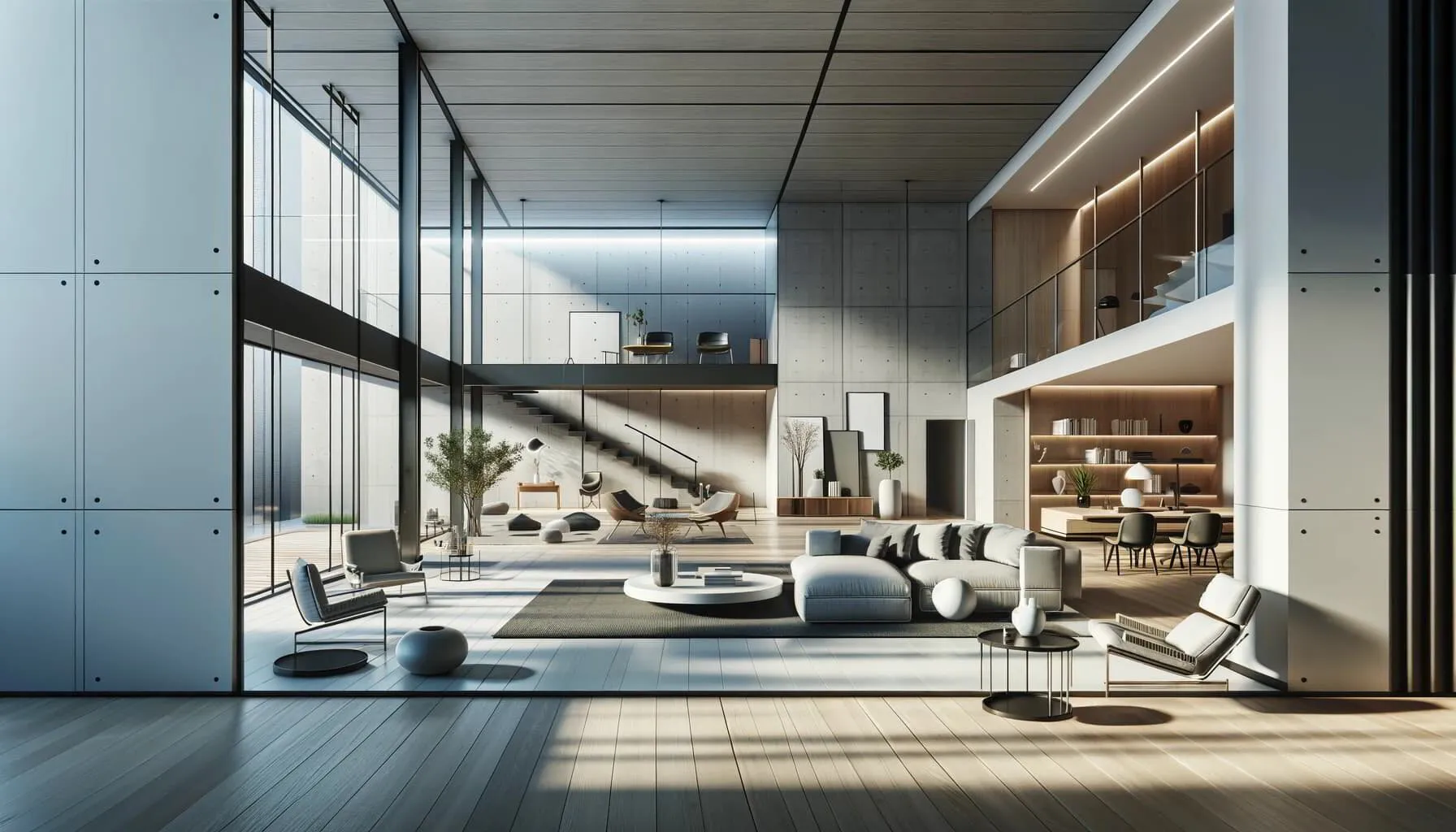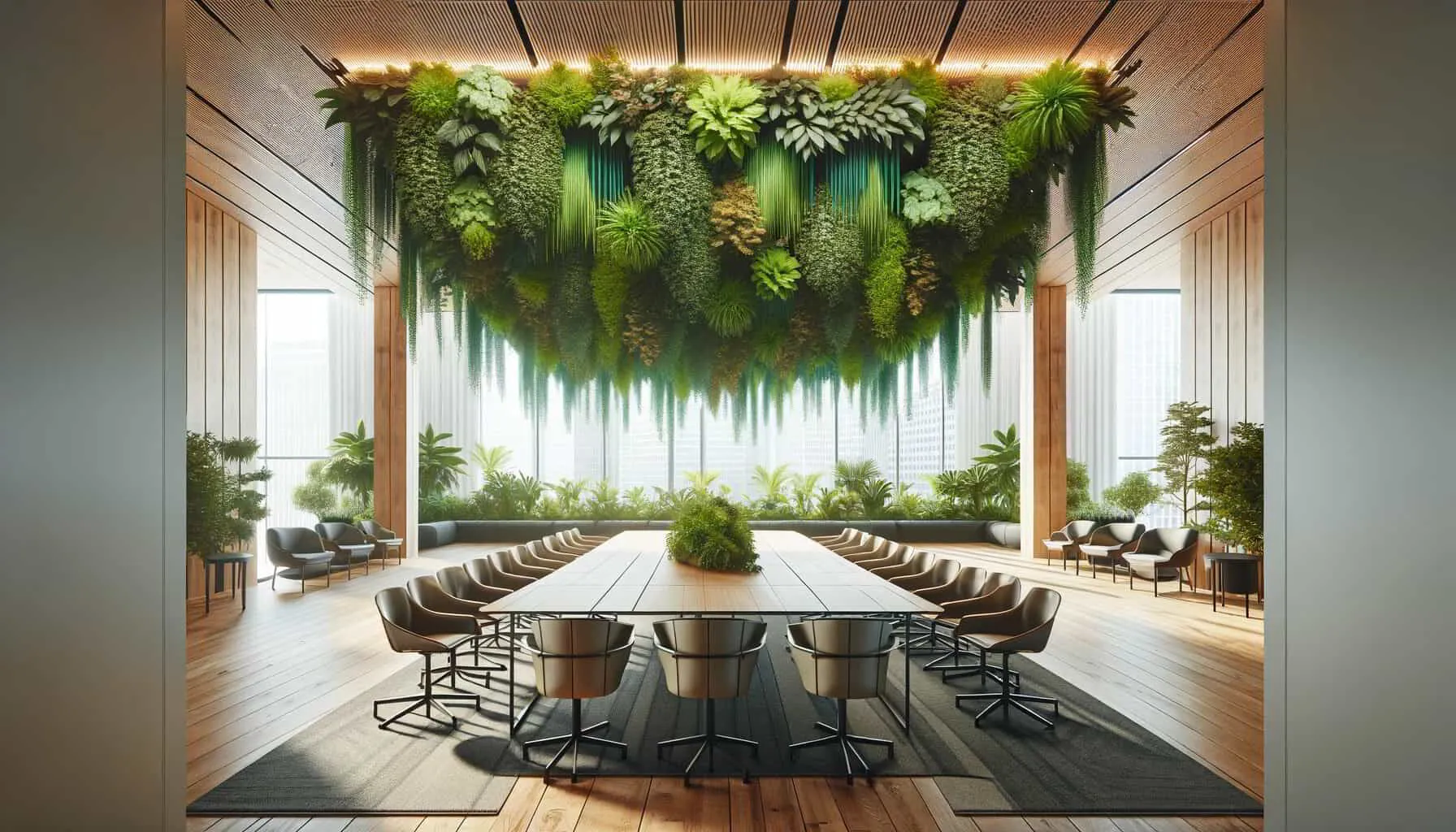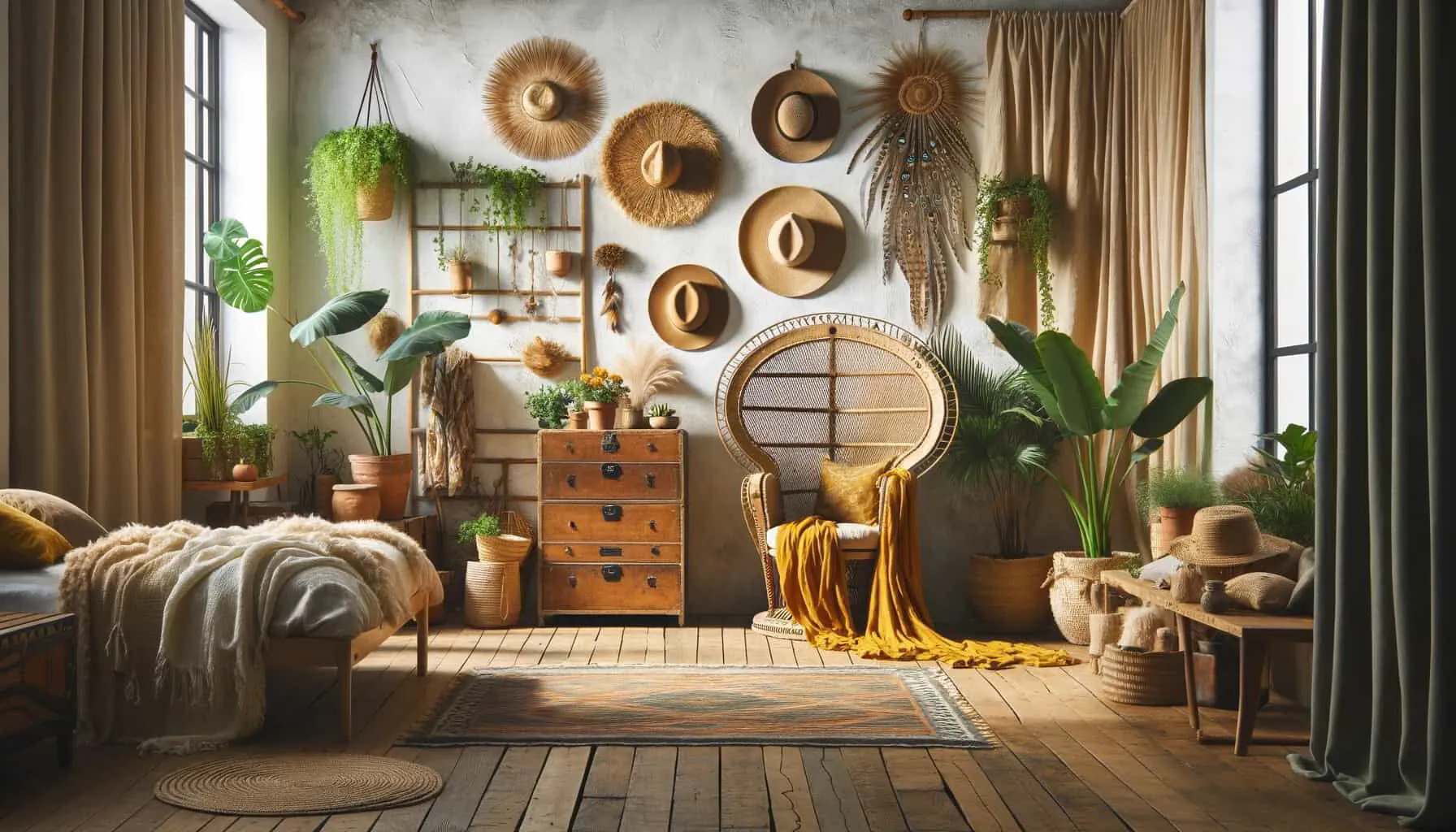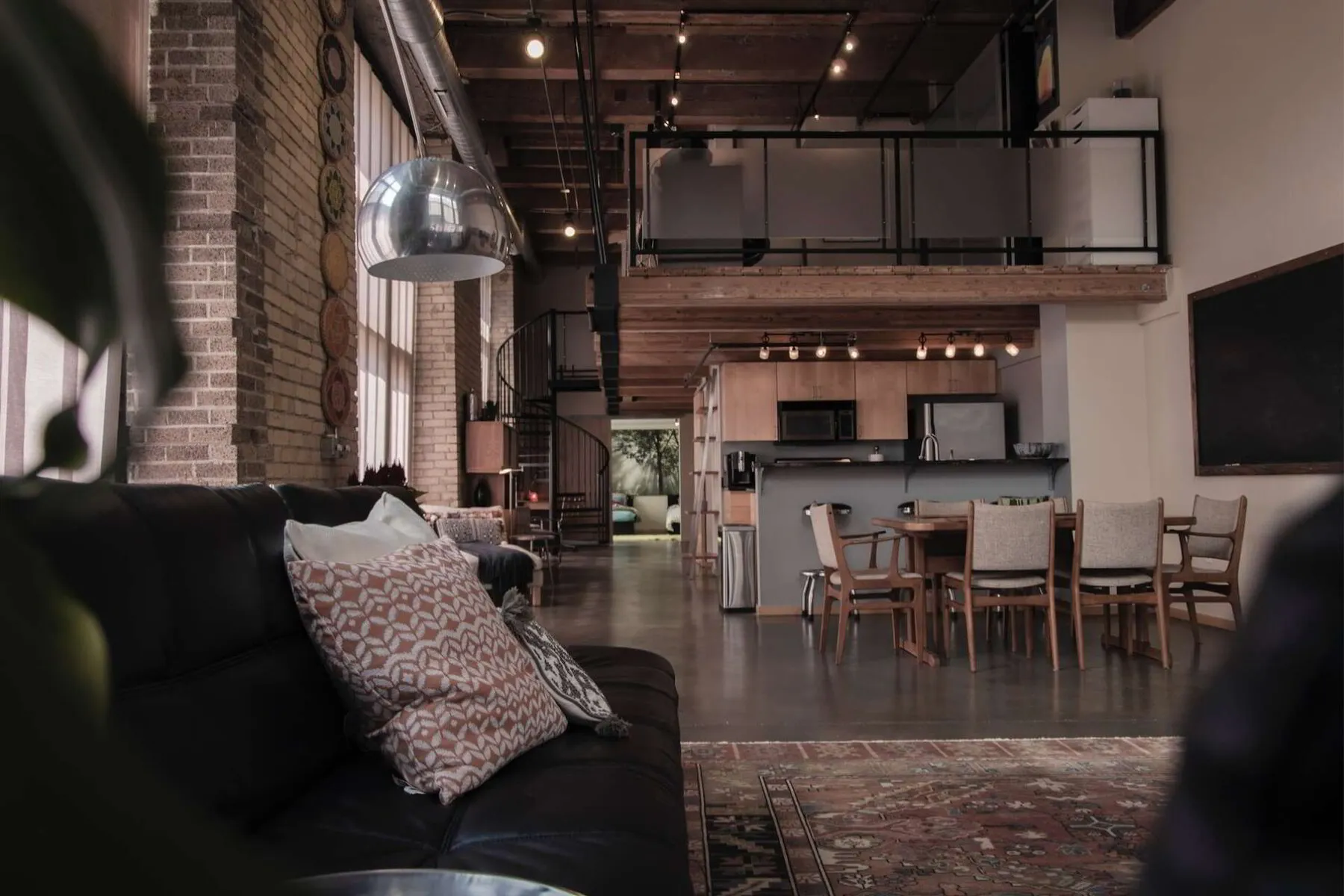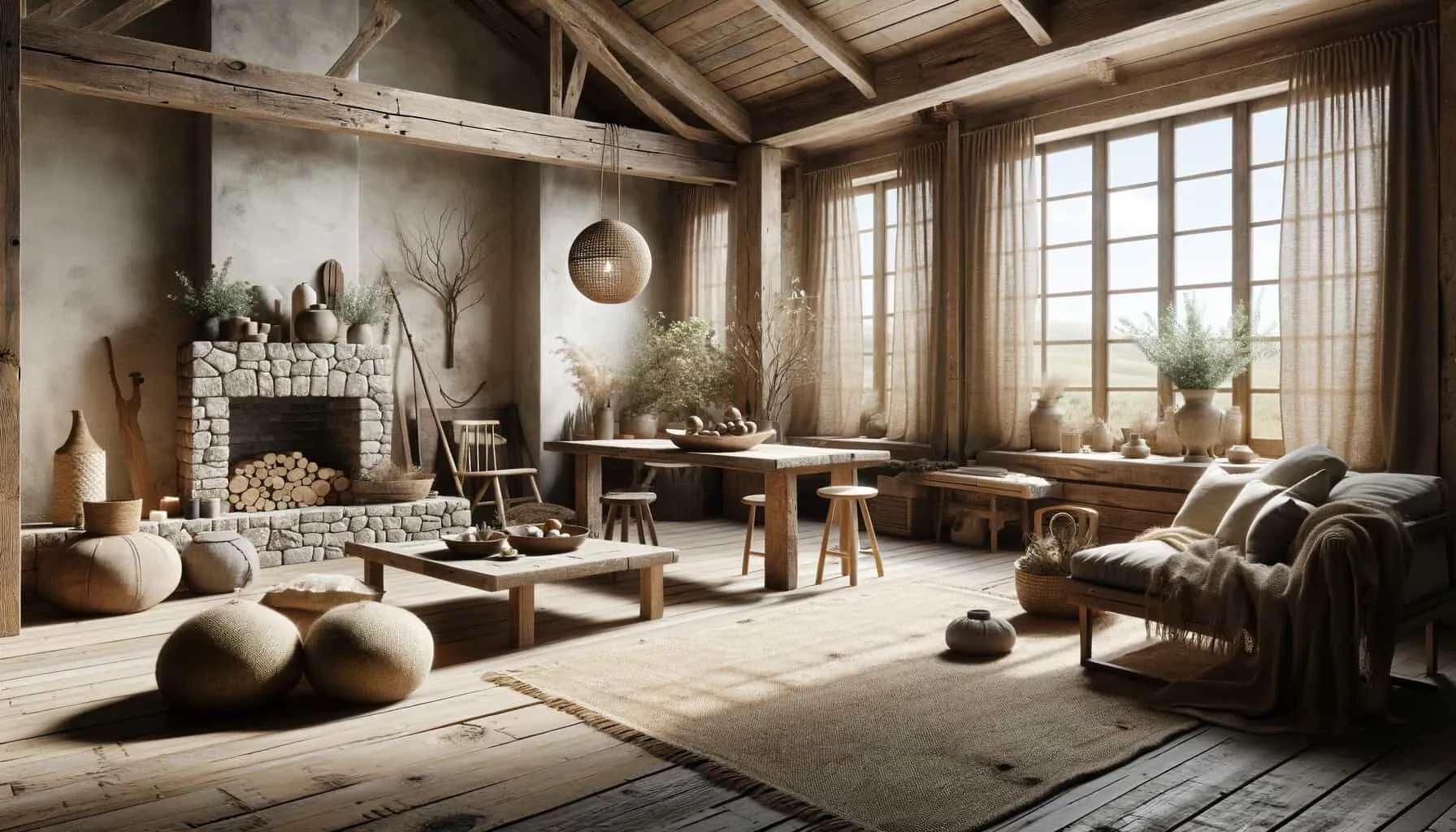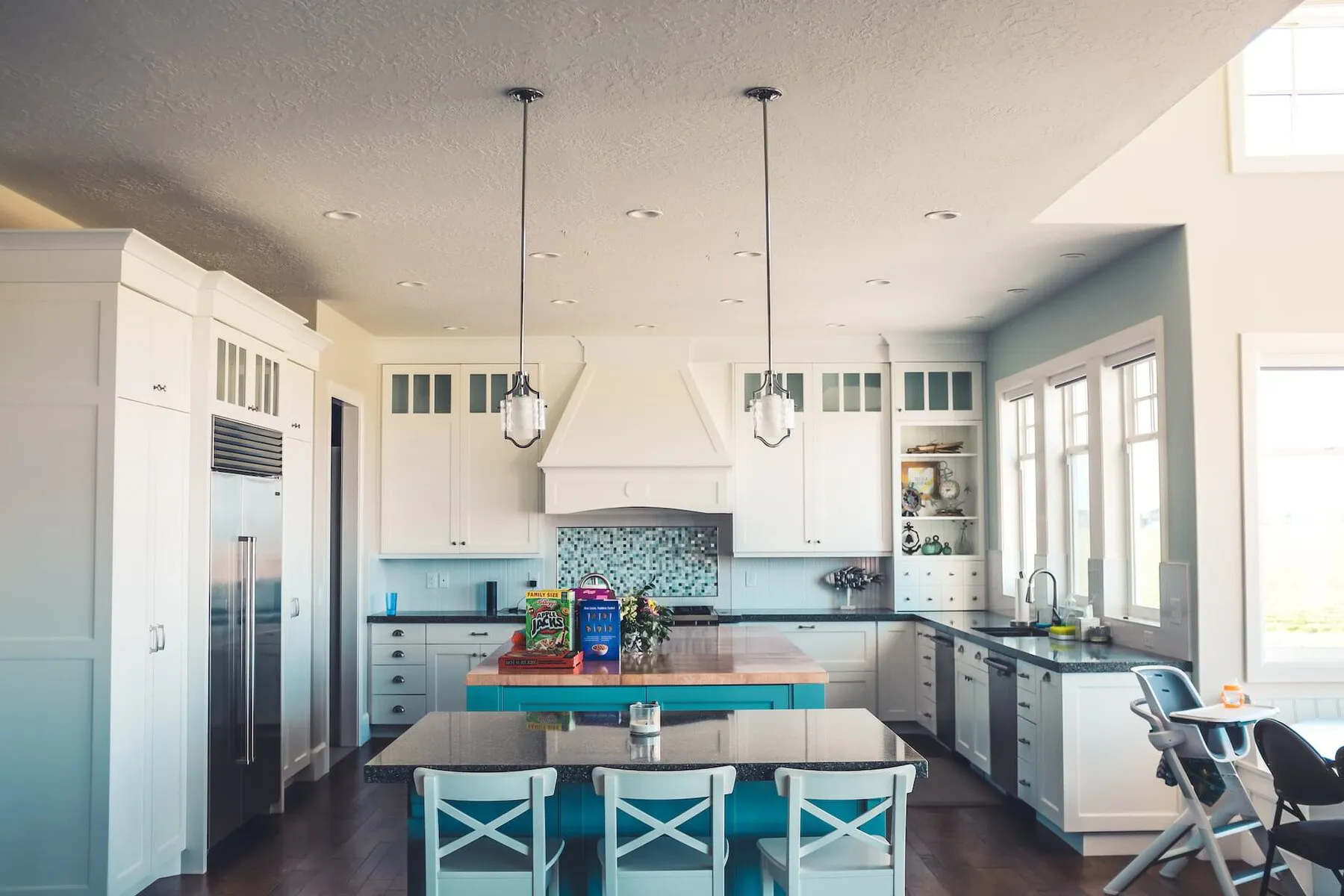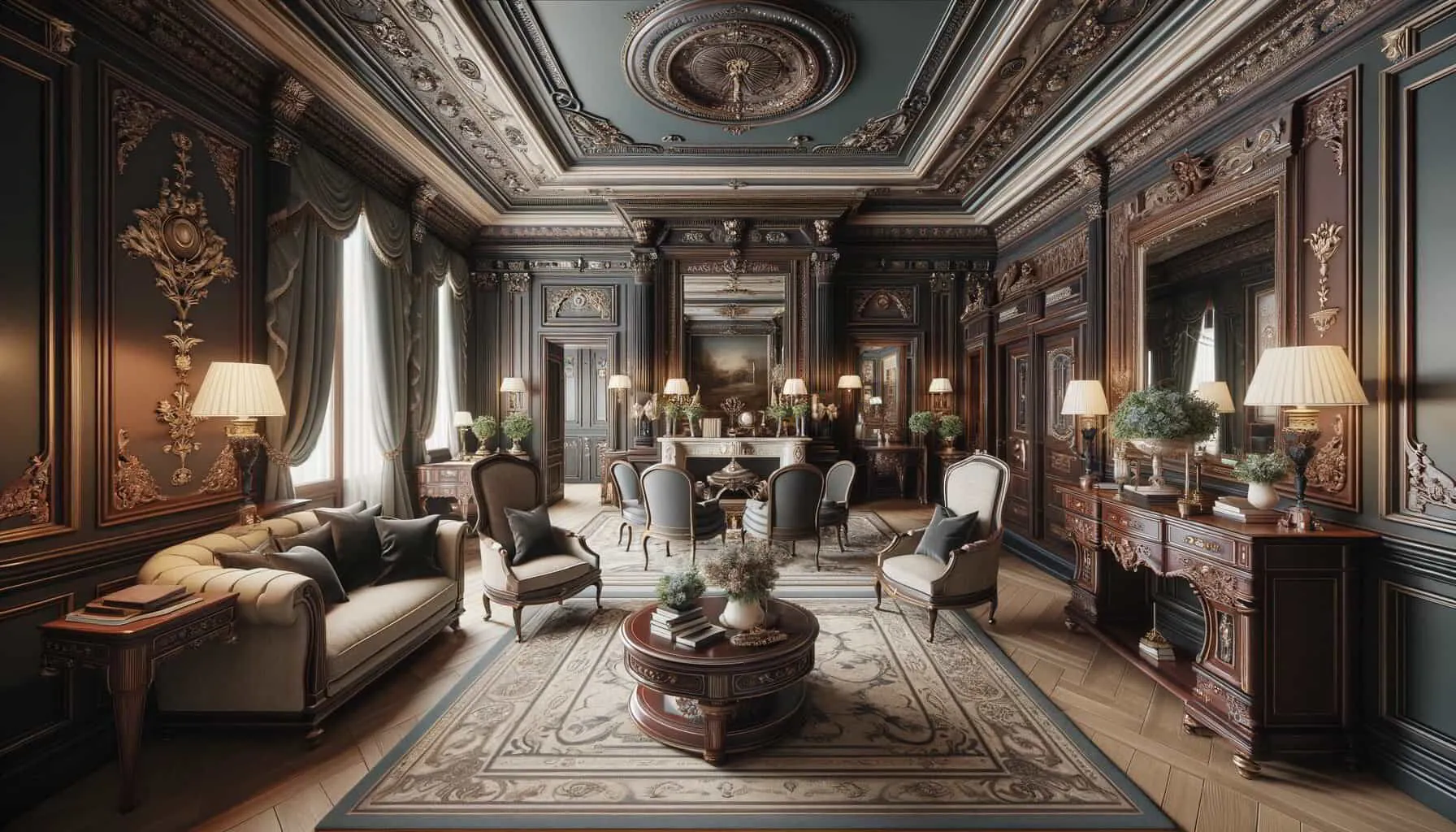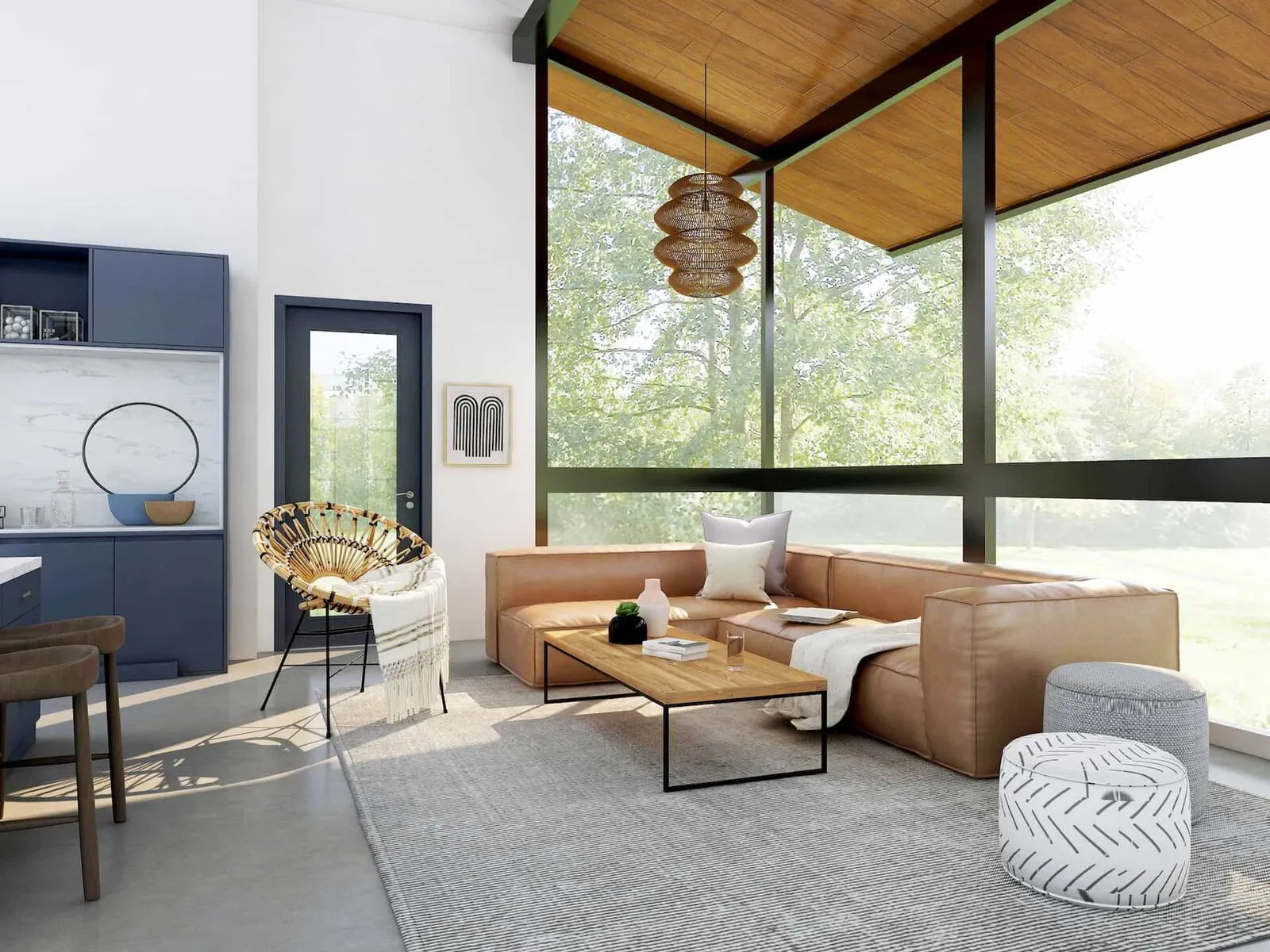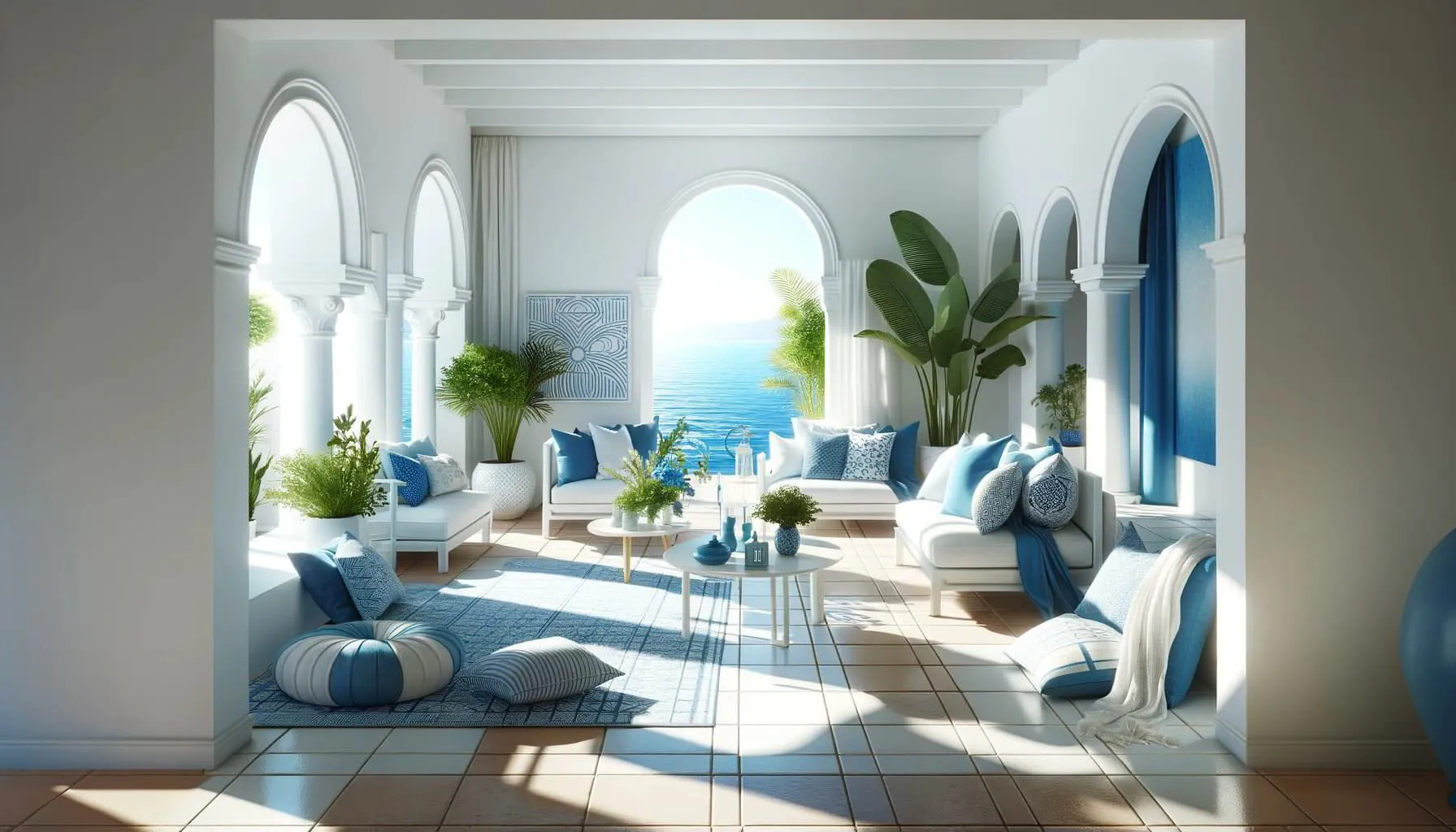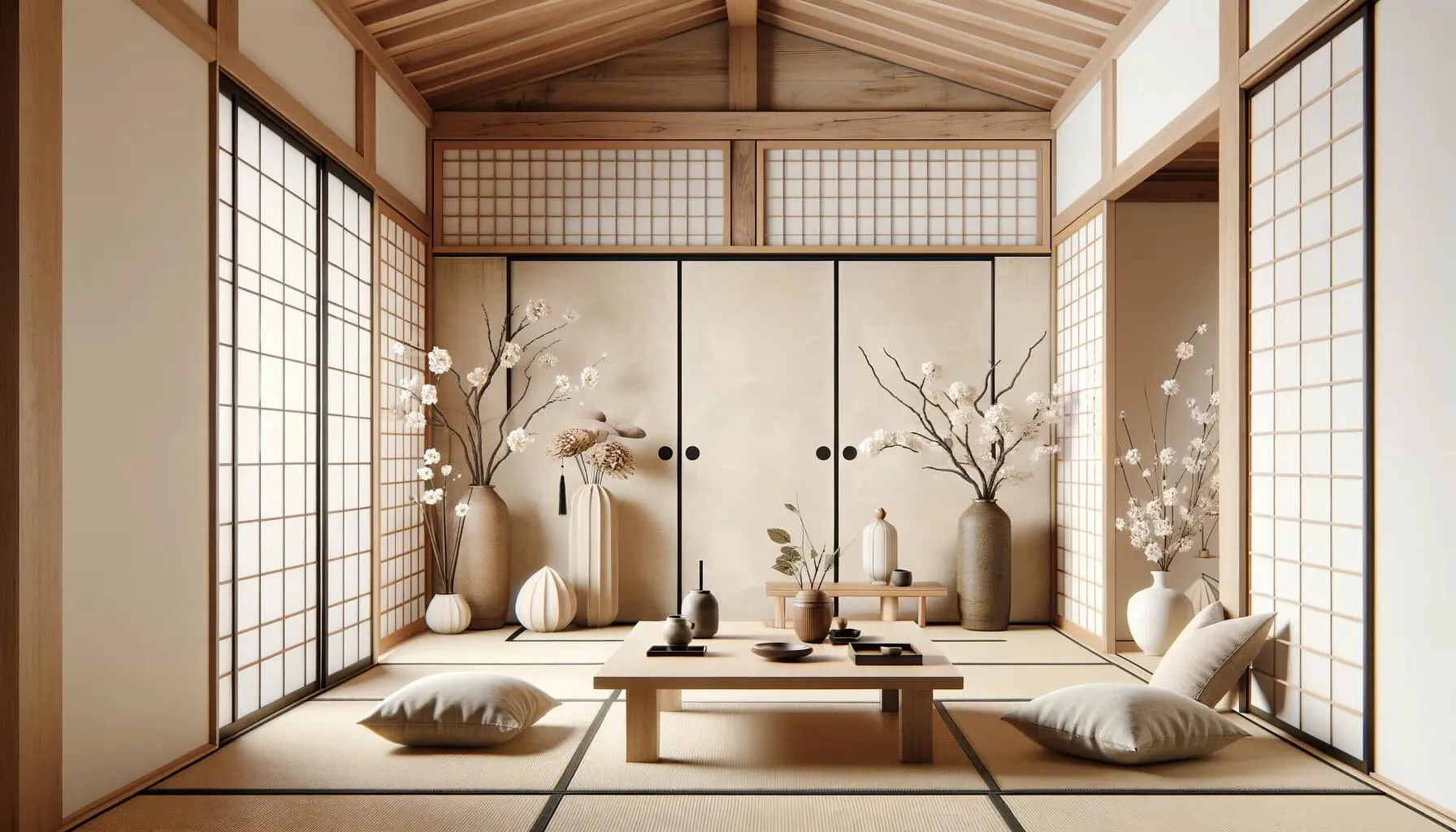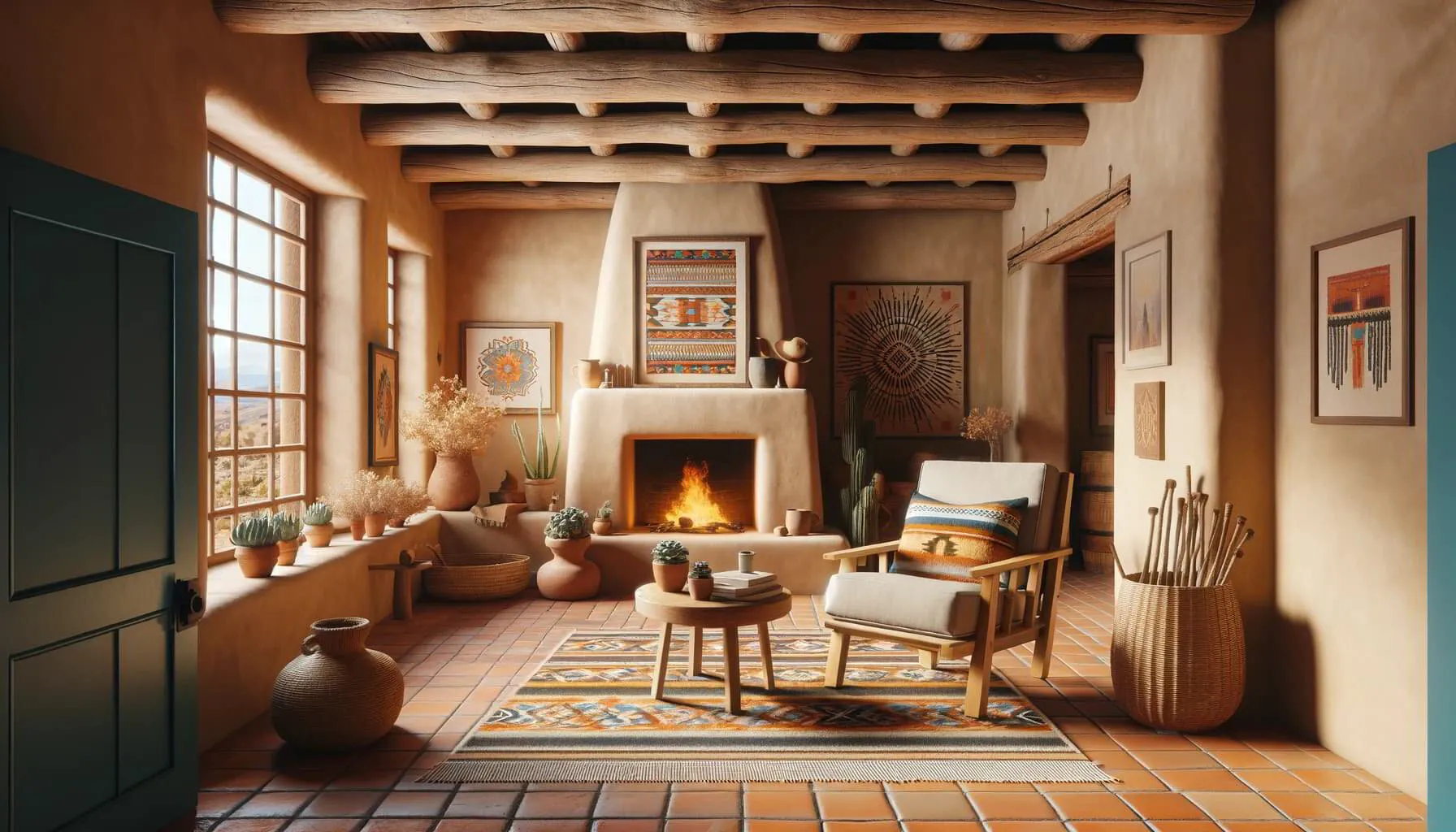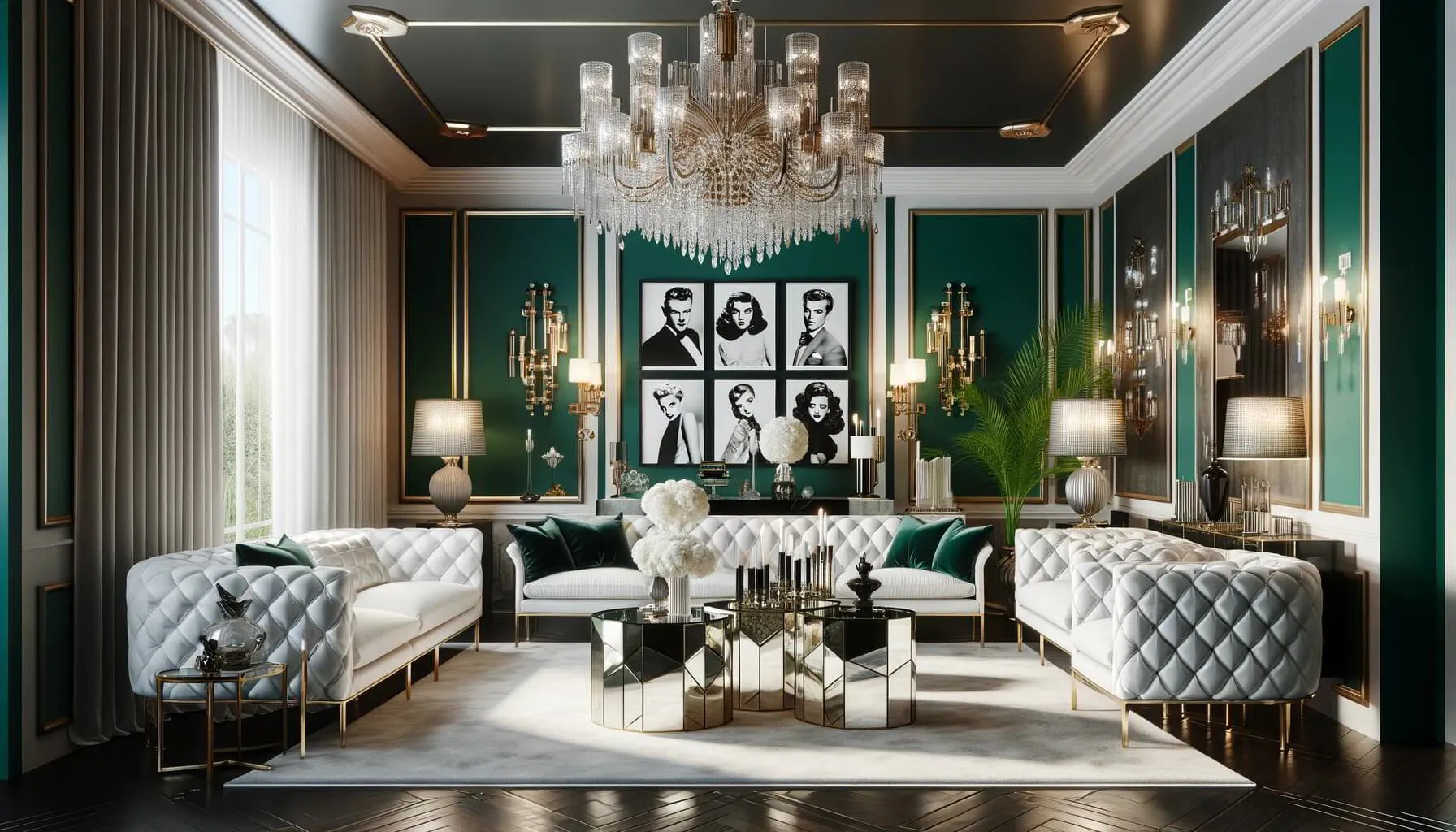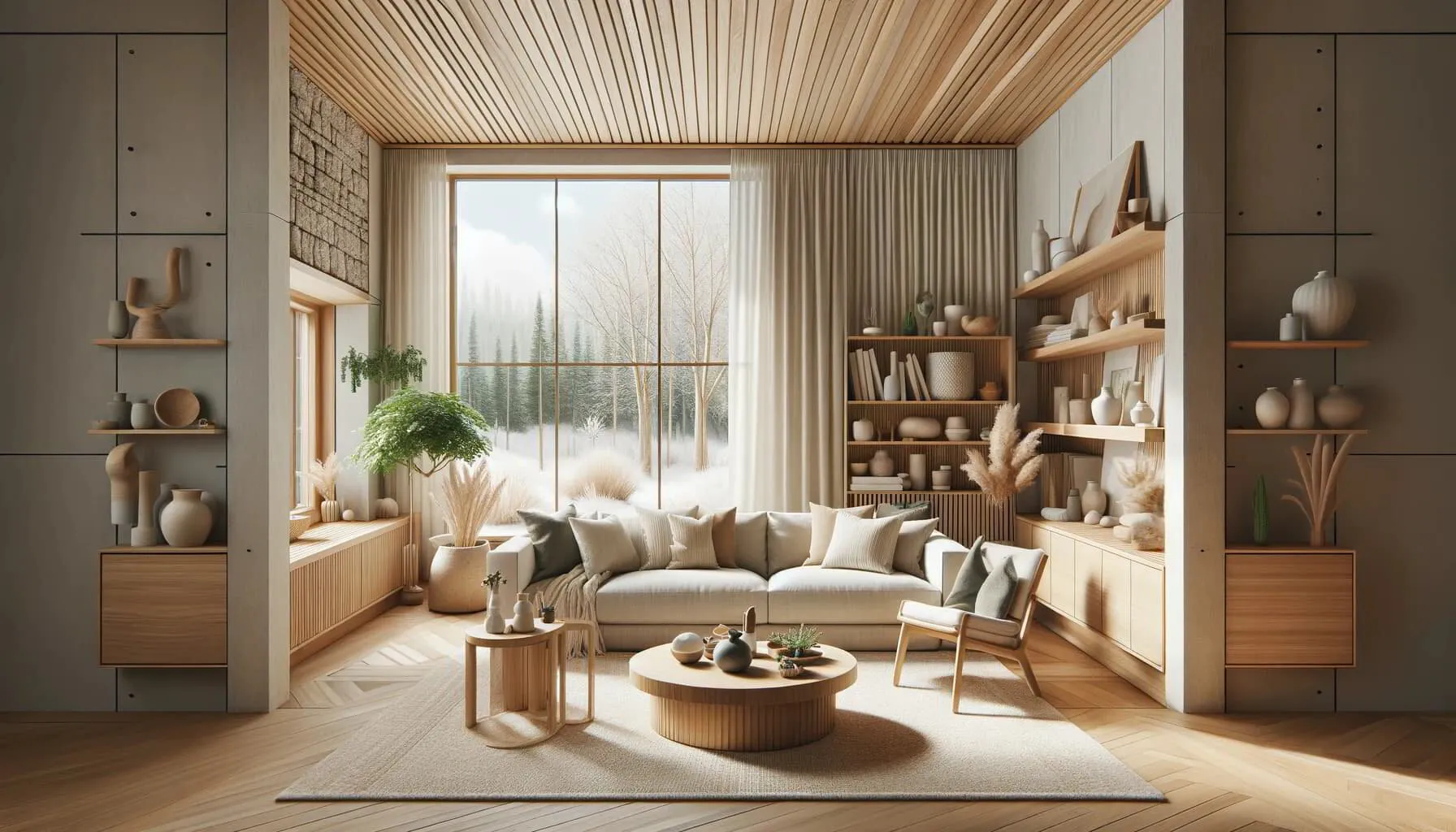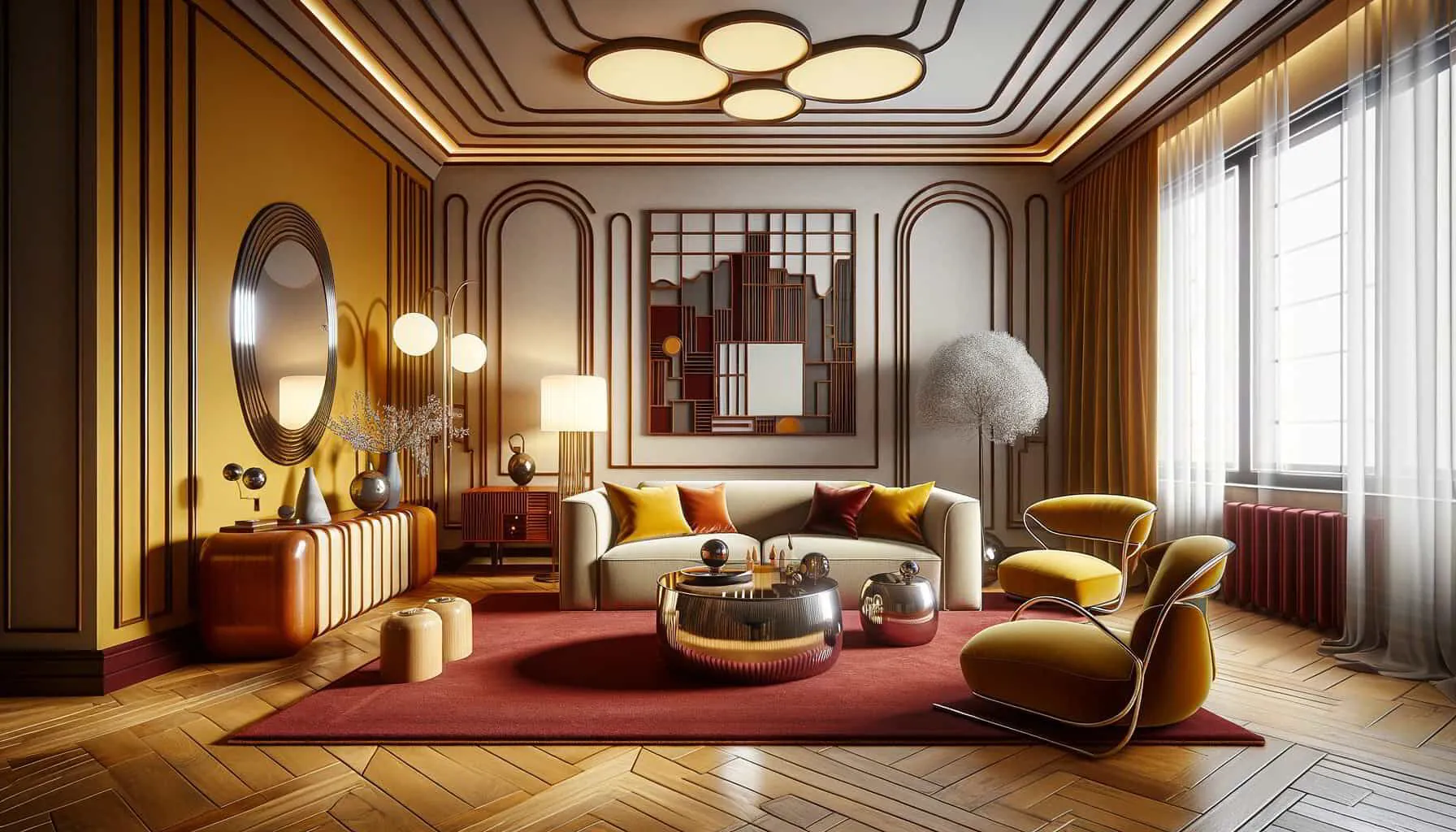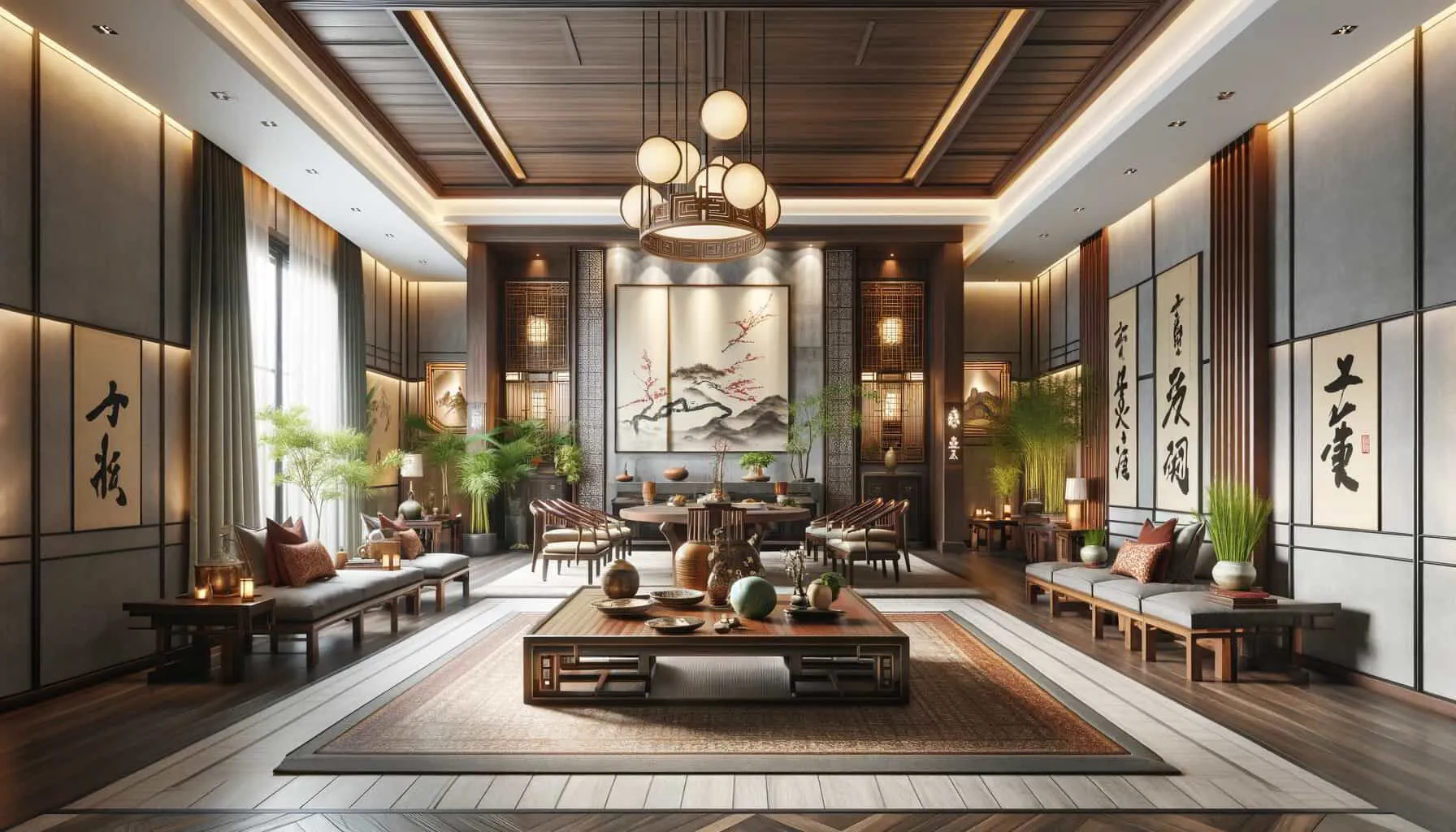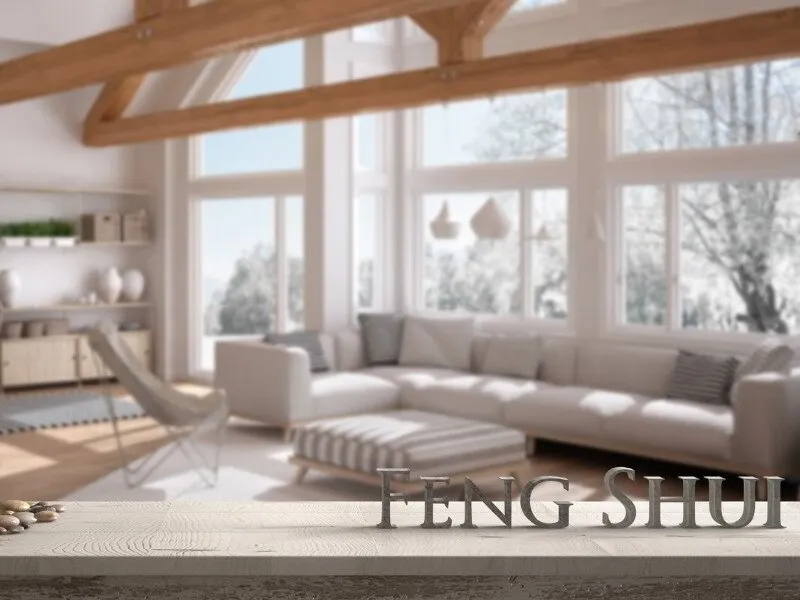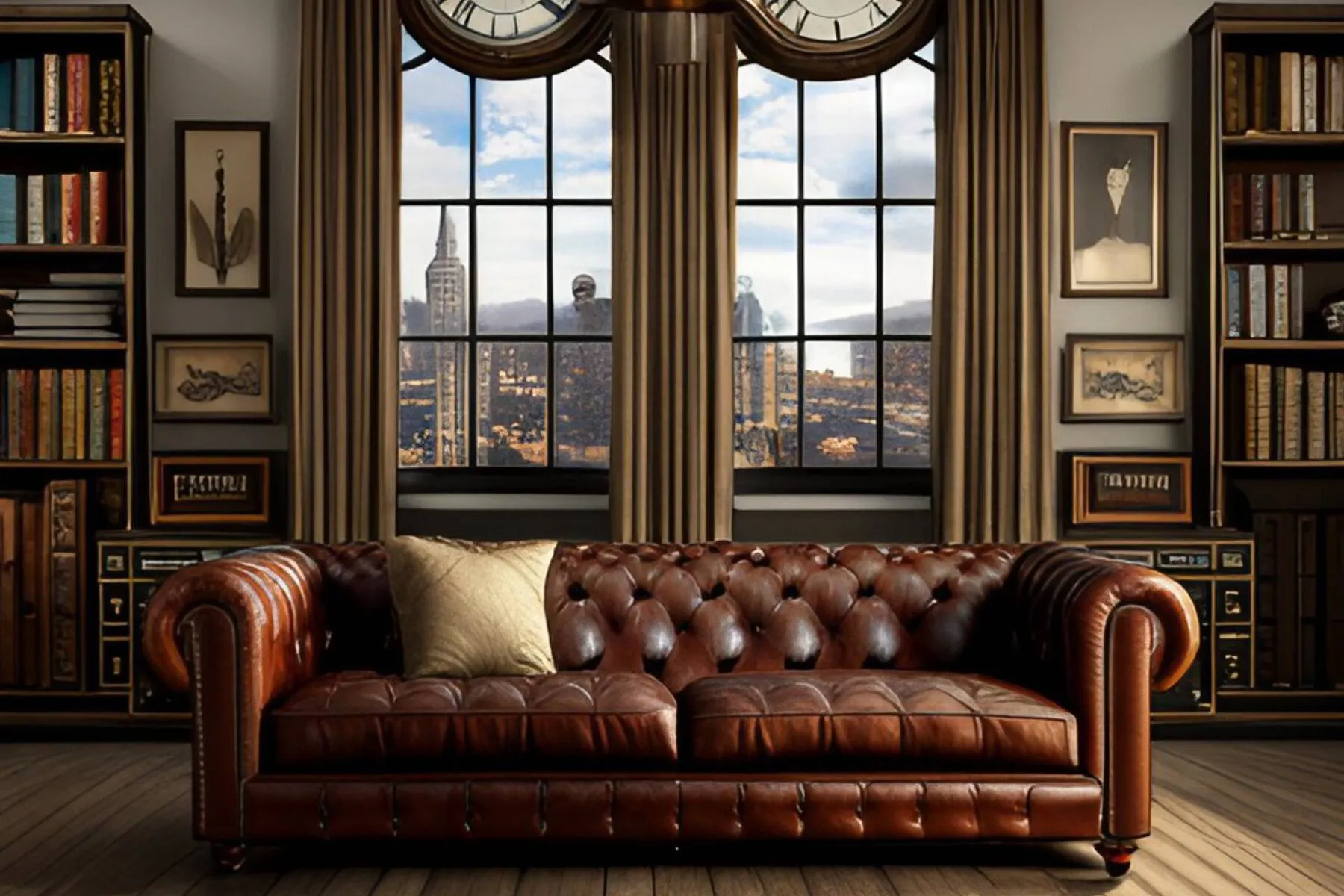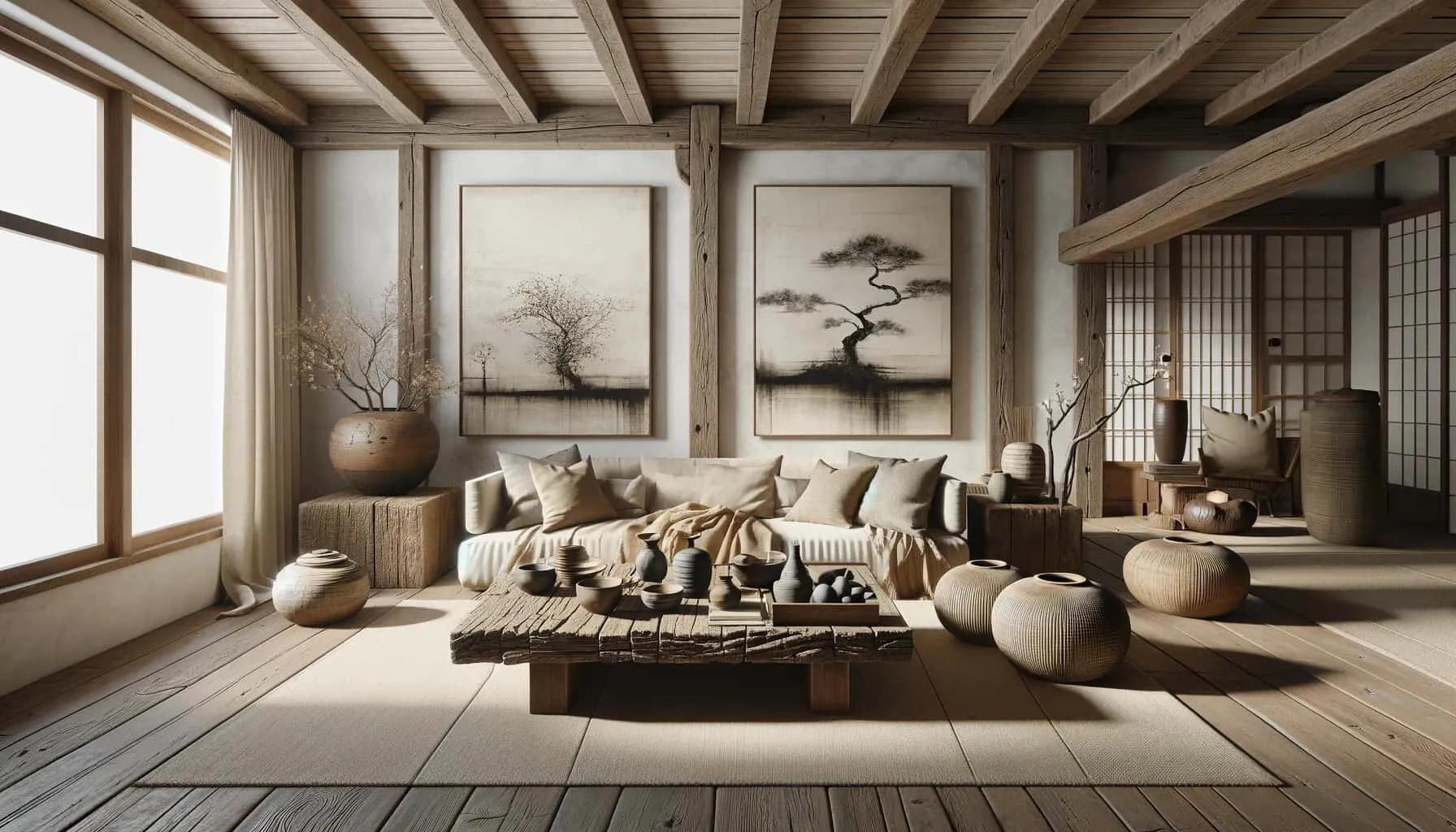Welcome to the world of interior design, where creativity meets functionality, and your living space becomes a canvas for self-expression and comfort.
In this article, we delve into the top 30 home interior design ideas, each offering a unique perspective on transforming your home into a reflection of your personal style and needs.
From the sleek lines of Modern design to the warm embrace of the Farmhouse style, we explore a spectrum of design options that cater to diverse tastes and lifestyles.
We're not just talking about a change of paint or a new sofa; this journey encompasses everything from Biophilic elements that bring nature indoors to the maximalist's celebration of bold patterns and colors.
Our homes are more than just places to live; they are extensions of our identity. In the following sections, we will guide you through these 30 interior design styles, ranked in order of their popularity for 2024.
For each style, we provide insights into its origins, key characteristics, and practical tips on incorporating them into your living spaces.
This curated list reflects the latest trends and offers diverse options to suit different tastes and preferences, ensuring you find the perfect match for your home.
Whether you're renovating your entire home or looking for small ways to refresh a room, these ideas are designed to inspire and spark creativity.
So, please sit back, relax, and let's embark on a journey through the fun and transformative world of home interior design. Get ready to reimagine your space in ways you never thought possible!
📘 Key Takeaways
- Embrace Diverse Styles: The article explores a wide range of interior design styles, from Minimalist and Scandinavian to Bohemian and Industrial, catering to various tastes and lifestyles.
- Focus on Personalization: Each design idea emphasizes personal style and comfort, transforming homes into unique reflections of individual identity.
- Incorporate Nature: Biophilic design is highlighted, emphasizing the integration of natural elements like plants and organic materials to enhance well-being.
- Blend of Old and New: The article discusses combining different design elements, such as the fusion of traditional and contemporary in Transitional design.
- Trend Awareness: The curated list reflects the latest trends in home interior design, ensuring readers are up-to-date with popular styles for 2024.
1. Minimalist Interior Design
Minimalist interior design is an ode to the idea of simplicity and purpose. It's where less becomes more, and calm is crafted through uncluttered spaces.
Characterized by clean lines, a monochrome color palette, and a focus on functionality, every element in a minimalist space is intentional and meaningful.
Imagine rooms where clutter is replaced with breathing space, where furniture is sleek and practical, and decorations are thoughtful, not overwhelming.
This style often incorporates elements of modern and contemporary designs, using geometric forms and neutral tones to create serene, harmonious environments.
Minimalist design isn't just about empty spaces; it's a celebration of refined simplicity, offering a peaceful retreat from the chaos of the outside world.
2. Scandinavian Interior Design
Scandinavian interior design is a hymn of simplicity, functionality, and elegance. Born in the Nordic countries, this style is a testament to a life filled with light, warmth, and natural beauty.
It's characterized by minimalism, clean lines, and a muted color palette, often punctuated by cozy, tactile textures and pops of earthy hues.
Imagine spaces bathed in natural light, where furniture is stylish yet practical, and every object has a place and purpose.
Scandinavian design doesn't just create a room; it crafts a sanctuary of calm, a canvas of tranquility where life’s small joys are celebrated and everyday moments become extraordinary.
📘 Related Reading: Bringing Scandinavian Interior Design Into Your Home
3. Modern Interior Design
Modern interior design transforms any area into a modern space where form, function, and unadorned beauty are celebrated.
Originating in the 20th century, this style is defined by its sleek, clutter-free aesthetic, clean lines, neutral colors, and simple yet bold elements.
Envision a modern space where each piece of furniture makes a statement, natural light enhances open layouts, and materials like steel, glass, and wood coexist harmoniously.
Integrating mid-century modernity and minimalism elements, it emphasizes spaciousness and uncluttered sophistication.
More than just a style, modern interior design creates an experience of elegance, efficiency, and serene simplicity, which is vital in today's fast-paced world.
4. Contemporary Interior Design
Contemporary interior design is a dynamic reflection of the here and now, blending various styles to create effortlessly current and vibrant spaces.
Characterized by fluidity and an appreciation for the latest trends, it often incorporates Modernism, Minimalism, and Art Deco elements.
Imagine a space that evolves with time, where sleek lines meet eclectic textures, and neutral palettes are accented with bold color splashes.
Furniture and home decor are chosen for their form and functionality, creating both stylish and livable environments.
Contemporary design is not just about keeping up with the times; it's about creating a living space that's always fresh, evolving, and inviting.
5. Biophilic Interior Design
Biophilic interior design is a heartfelt ode to nature, fostering a deep connection between our living spaces and the natural world.
This style integrates natural elements—plants, natural light, organic materials, or nature-inspired textures and patterns.
Envision a space where greenery thrives alongside modern or rustic elements, where the boundaries between indoors and outdoors blur, creating a sanctuary that rejuvenates and inspires.
Biophilic design doesn't just decorate a room; it breathes life into it, enhancing well-being and bringing nature's tranquil, healing beauty into our everyday lives.
This approach is not just a design choice—it's a way to bring nature's harmonious and restorative power into our homes.
6. Mid-Century Interior Design
Mid-Century interior design is a nostalgic yet timeless nod to the 1950s and 60s, characterized by its unique blend of simplicity and organic shapes.
It marries function with form, showcasing clean lines, gentle curves, and a love for materials like wood, metal, and glass.
Picture a space where retro meets modern, with iconic furniture pieces that are as artistic as practical.
This style often intersects with elements of minimalism and modernism, creating elegant and comfortable spaces.
Mid-Century design isn't just about reviving a bygone era; it's about celebrating a classic aesthetic that continues to influence and inspire contemporary living.
📘 Related Reading: Revamping Your Home with Mid-Century Modern Decor
7. Bohemian (Boho) Interior Design
Bohemian (Boho) interior design is an artistic expression of freedom and eclecticism, celebrating life's unconventional and colorful aspects.
Characterized by a mix of patterns, textures, and vibrant colors, it breaks free from traditional design rules.
Imagine spaces filled with global inspirations, vintage finds, and handcrafted items, where every object tells a story.
Layered fabrics, like throw pillows and tapestries, create a cozy, lived-in feel. Boho style often blends with elements of vintage or rustic designs, offering a relaxed, carefree ambiance.
It's not just about decorating a bed or room; it's about creating a personal haven that reflects a life of experiences, travels, and artistic flair.
8. Industrial Interior Design
Industrial interior design is a raw and edgy celebration of the unfinished and utilitarian. Rooted in repurposing old factories and warehouses, this style is characterized by exposed brick, ductwork, beams, and materials like metal, wood, and concrete.
Picture a space where industrial elements harmoniously blend with modern or rustic touches, creating a unique, loft-like vibe. Think of high ceilings, open layouts, and a neutral palette accentuating metallic accents.
Industrial design isn't just about embracing the old; it's about reimagining and repurposing it to create functional and stylish spaces, reflecting an urban aesthetic with a historical twist.
📘 Related Reading: Modern Industrial Interior Design: 15 Design Ideas For That Old New Look!
9. Rustic Interior Design
Rustic interior design is a warm embrace of the rugged natural beauty, evoking a sense of cozy countryside charm.
This style is characterized by raw, organic textures and materials like stone, wood, and burlap, often incorporating reclaimed or unfinished elements.
Picture a space where rustic simplicity meets a touch of elegance, featuring earthy tones, handcrafted furniture, and abundant natural light.
This design often intersects with elements of farmhouse and country styles, creating a homey, welcoming atmosphere.
Rustic design is more than a style; it's a return to roots, celebrating the unpolished perfection of nature and bringing its serene, grounding spirit into our homes.
10. Eclectic Interior Design
Eclectic interior design is a vibrant tapestry of diverse styles, textures, and eras woven together to create a uniquely personal space.
It's characterized by a harmonious blend of contrasting elements - a mix of old and new, luxury and simplicity, bold patterns alongside muted tones.
Imagine a space that tells your story, where a vintage heirloom coexists with contemporary art, and global influences meet local craftsmanship.
This design style often merges bohemian, modern, and vintage elements, creating a look that is as individual as it is dynamic.
Eclectic design isn't just about mixing and matching; it's about curating a space that reflects the rich tapestry of your life and experiences.
11. Coastal Interior Design
Coastal interior design captures the serene and breezy essence of beachside living. It's characterized by light, airy color palettes with hues of blues and greens, reflecting the sea and blue sky, complemented by crisp whites and sandy neutrals.
This style invites natural light and incorporates elements like driftwood, seashells, and nautical accents to evoke a relaxed seaside atmosphere.
Imagine fresh and tranquil spaces where soft fabrics and comfortable furnishings create a laid-back vibe.
Often blending with elements of cottage and contemporary styles, coastal design isn't just about a look; it's about recreating the soothing and rejuvenating spirit of the ocean in your home.
12. Farmhouse Interior Design
Farmhouse interior design exudes a warm, welcoming charm reminiscent of a cozy countryside retreat. It has rustic elements, natural textures, and a neutral color palette accented with pastel hues.
This style celebrates simplicity and functionality, featuring vintage furnishings, shiplap walls, and exposed wood beams. Imagine a space where traditional meets modern, creating a homely yet stylish atmosphere.
Key elements include distressed wood, comfortable upholstered furniture, and vintage home decor. Farmhouse design often overlaps with country and rustic styles, offering a sense of comfort and nostalgia.
It's not just a design choice; it's about creating a home that feels like a heartwarming family embrace, a haven of tranquility and warmth.
13. Traditional Interior Design
Traditional interior design is a timeless tribute to elegance and order, drawing inspiration from classic European décor of the 18th and 19th centuries.
This style is characterized by its attention to detail, rich color palettes, and luxurious fabrics. It embraces symmetry and structure, featuring dark, polished wood, ornate furnishings, and elegant decorative elements like moldings and art.
Picture a space where history and sophistication intertwine, creating an atmosphere of refined comfort. Traditional design often incorporates elements of Victorian, Georgian, and Colonial styles, offering a sense of grandeur and heritage.
It's not just about decorating a space; it's about crafting an environment that reflects a rich legacy and timeless beauty.
14. Transitional Interior Design
Transitional interior design is the harmonious fusion of traditional elegance and contemporary simplicity. It blends the classic comfort of traditional styles with the clean lines and understated color palette of modern design.
Imagine a space where plush, classic furnishings meet sleek, modern accents, creating a balanced, cohesive look.
This style characterizes itself with neutral colors, subtle textures, and a focus on minimalism without sacrificing warmth and comfort.
Transitional design bridges the gap between old and new, offering a timeless, sophisticated, and approachable aesthetic. It's not just about mixing styles; it's about creating a seamless blend that provides the best of both worlds.
15. French Country Interior Design
French Country interior design is a charming blend of rustic and refined, capturing the essence of the French countryside.
Warm, earthy colors, natural materials like stone and distressed wood, and ornate, vintage furnishings characterize this style. Picture a space where elegance meets coziness, with soft linens, floral patterns, and abundant natural light.
Key elements include curved lines, intricate woodwork, and a palette inspired by the natural landscape. French Country design often overlaps traditional and rustic styles, creating a homely yet sophisticated ambiance.
It's a style that invites relaxation and comfort, embodying rural France's romantic and pastoral spirit.
16. Mediterranean Interior Design
Mediterranean interior design evokes the coastal regions' sun-drenched warmth and relaxed elegance. This style is characterized by its use of earthy, vibrant colors like terracotta, azure, and olive green, reflecting the Mediterranean's sea, sky, and landscape.
Key features include textured walls, tiled floors, and wrought iron details, creating a rustic yet sophisticated atmosphere. Furnishings are often simple and robust, complemented by decorative tiles and fabrics in bold patterns.
This design frequently integrates Spanish, Italian, and Greek elements, emphasizing indoor-outdoor living and a connection to nature. Mediterranean design is more than a style; it's a celebration of life's simple pleasures, creating inviting and visually rich spaces.
17. Asian Zen Interior Design
Asian Zen interior design is a serene and mindful approach that embodies the tranquil philosophy of Zen Buddhism.
Minimalism, clean lines, and a harmonious balance between natural and man-made elements characterize this style. Imagine spaces where simplicity reigns, with bright yet subtle color schemes, natural materials like wood and stone, and an abundance of natural light.
Furnishings are understated yet functional, fostering a sense of calm and order. Key elements include open, uncluttered spaces and incorporating nature through plants or water features.
Asian Zen design often overlaps with contemporary and minimalist styles, creating a peaceful retreat that encourages reflection and inner peace.
18. Southwestern Interior Design
Southwestern interior design is a vibrant tapestry that weaves together the rich colors and textures of the American Southwest.
Characterized by earthy tones, geometric patterns, and rustic elements, it reflects the landscape and cultural heritage of the region.
Imagine spaces infused with the warmth of terracotta, the depth of turquoise, and the brightness of sun-soaked yellows.
Distinctive features include Navajo or Aztec patterns, handcrafted textiles, and pottery. Southwestern design often blends with rustic and bohemian styles, featuring natural materials like wood and leather.
It's a style that narrates a story of tradition and natural beauty, creating inviting and expressive spaces.
19. Hollywood Glam Interior Design
Hollywood Glam, also known as Hollywood Regency, is an interior design style that brings the opulence and luxury of classic Hollywood to your living room.
This style is defined by its bold use of color, lavish textiles, and metallic accents, creating visual interest that feels both glamorous and dramatic.
Envision a plush velvet sofa, a mirrored coffee table, and a crystal chandelier as centerpieces. Key elements include high-gloss finishes, ornate detailing, and a blend of modern and Art Deco influences.
Hollywood Glam in a living room is about crafting a show-stopping, sophisticated atmosphere that’s as visually captivating as it is comfortable, turning everyday spaces into glimpses of classic Hollywood allure.
20. Art Deco Interior Design
Art Deco interior design is a splendid fusion of bold geometric patterns, rich colors, and lavish ornamentation. Originating in the 1920s and 30s, it's characterized by streamlined, symmetrical designs and a luxurious palette of gold, black, and metallic tones.
Imagine a space where elegance meets modernity; think angular furniture, glass, and chrome accents, and opulent decorative elements like sunburst motifs and chevron patterns.
Art Deco often combines modern and minimalist styles, highlighting its unique, ornate features against simpler backdrops.
It's a design that encapsulates the glamour and optimism of its era, creating spaces that are timeless, sophisticated, and full of character.
📘 Related Reading: Reviving the Glamour: A Comprehensive Guide to Modern Art Deco Interior Design
21. Shabby Chic Interior Design
Shabby Chic interior design is a charming celebration of time-worn elegance and vintage grace. This style is marked by its soft, pastel color palette, distressed furniture, and abundant floral and lace elements.
Imagine spaces where antique meets chic, where every piece tells a story of a past life, repurposed with love. Key characteristics include whitewashed wood, comfortable slip-covered seating, and a mix of delicate trinkets and rustic accents.
Shabby Chic often blends with country cottage and vintage styles, creating a cozy, romantic atmosphere. It's more than a design choice; it's about creating a warm, inviting space that feels like a well-loved, comfortable home.
22. Japandi Interior Design
Japandi interior design is a harmonious blend of Japanese minimalism and Scandinavian functionality, creating serene and practical spaces.
This style combines the Japanese philosophy of wabi-sabi, which finds beauty in imperfection, with the Scandinavian ethos of hygge, emphasizing comfort and coziness.
Imagine a space where clean lines meet organic textures, and a muted color palette brings calmness and simplicity. Key elements include natural materials like wood and bamboo, functional yet elegant furnishings, and a focus on craftsmanship.
Japandi design creates an environment of tranquility and mindful living, where every object has a purpose, and simplicity is the ultimate sophistication.
23. Maximalist Interior Design
Maximalist interior design is a vibrant celebration of abundance and self-expression. This style rebels against the 'less is more' mantra, instead embracing 'more is more' with its bold patterns, saturated colors, and eclectic mix of textures and objects.
Imagine a space where every inch tells a story, rich in visual interest and layered with personal collections, art, and diverse cultural influences. Key characteristics include a fearless use of color, a blend of ornate and whimsical elements, and a knack for curating rather than cluttering.
Maximalism often incorporates elements of bohemian and vintage styles, creating spaces that are not just rooms but a tapestry of life's experiences and passions.
24. Organic Interior Design
Organic interior design is a soothing embrace of nature's effortless beauty, focusing on using natural elements and materials. Earthy, muted tones, shades, organic shapes, and textures like wood, stone, and natural fibers characterize this style.
Imagine spaces where the outside world seamlessly blends with the inside, creating a sense of harmony and tranquility. Key elements include sustainable, eco-friendly materials and furniture with a simple, functional design.
Organic design often intersects with minimalist and Scandinavian styles, emphasizing clean lines and a clutter-free environment. It's about crafting spaces that are aesthetically pleasing, nurturing, and grounded in the natural world.
25. Art Moderne Interior Design
Art Moderne, a style that evolved from Art Deco in the 1930s, celebrates streamlined, aerodynamic design reflecting the optimism of the machine age.
Characterized by smooth lines, rounded corners, and a nautical influence, it embodies a sleek, futuristic aesthetic. Imagine spaces focusing on horizontal lines, chrome accents, and glossy finishes, often complemented by soft, neutral color palettes.
Key elements include mirrored surfaces, glass block walls, and the use of industrial materials. Art Moderne intersects with elements of modernism and minimalism, creating functional and stylish spaces and showcasing a sophisticated blend of comfort and the sleek, progressive spirit of the era.
26. Asian Décor Interior Design
Asian Décor interior design is an elegant fusion of cultural richness and serene aesthetics, drawing from the diverse traditions of Asia.
This style is characterized by its use of natural materials like bamboo and silk, harmonious color schemes, and intricate craftsmanship. Imagine spaces where balance and symmetry reign, adorned with delicate rice paper screens, ornate calligraphy, and tranquil Zen gardens.
Key elements include screens for subtle division of space, minimalist furniture, and decorative accents inspired by nature.
Asian Décor often blends elements of traditional Japanese, Chinese, and Southeast Asian styles, creating a visually striking and deeply calming environment, reflecting the ancient wisdom and beauty of Asian cultures.
27. Feng Shui Interior Design
Feng Shui interior design is an ancient Chinese practice focused on creating balance and harmony between an individual and their environment.
Characterized by the strategic placement of objects to optimize the flow of energy (Chi), this style emphasizes cleanliness, organization, and the use of specific colors to enhance well-being. Key elements include natural light, indoor plants, mirrors, and decluttered spaces.
Feng Shui often incorporates minimalist and eco-friendly designs, creating tranquil, balanced spaces. It's more than just a design aesthetic; it's about creating an environment that nurtures positivity, health, and prosperity, turning your home into a sanctuary of peace and balance.
📘 Related Reading: Feng Shui Interior Design: Unleashing Positive Energy in Your Living Space
28. Bauhaus Interior Design
Bauhaus interior design, originating from the influential German Bauhaus school of the early 20th century, champions functionality, simplicity, and the unity of art and design.
Characterized by clean lines, geometric shapes, and a lack of ornamentation, it focuses on the harmony between function and aesthetics. Key elements include the use of industrial materials like steel and glass, and a color palette that's typically neutral with splashes of primary colors.
Bauhaus often intersects with Modernist and Minimalist designs, emphasizing practicality and timeless elegance. It's not just a style; it's a philosophy that celebrates efficiency, innovation, and the beauty of unadorned simplicity.
📘 Related Reading: Bauhaus Design 101: The Ultimate Guide to Transforming Your Home
29. Retro Futuristic Interior Design
The retro-futuristic interior design seamlessly blends elements of past eras with futuristic concepts to create a captivating aesthetic.
It draws inspiration from mid-20th-century visions of the future, such as the Space Age and Atomic Age, incorporating sleek lines, geometric shapes, and a vibrant color palette. Iconic materials like chrome and plastic are used alongside vintage furniture and space-age accents.
The result is a visually striking and nostalgic yet forward-looking space that sparks imagination and nostalgia, inviting you to enter a world where the past meets the future with style and flair.
📘 Related Reading: Creating a Unique Space with Retro-Futuristic Interior Design
30. Wabi Sabi Interior Design
Wabi-Sabi interior design is a Japanese-inspired philosophy that celebrates the beauty of imperfection, transience, and simplicity. It embodies a harmonious blend of rustic, natural materials and minimalist aesthetics.
Characterized by weathered wood, handmade pottery, muted colors, and organic textures, it fosters a sense of serenity and mindfulness. The design cherishes the unique marks of time and wear, reminding us to find beauty in the flaws of life.
Wabi-Sabi invites you to embrace authenticity and find peace in the simplicity of your surroundings, creating a space that feels both calming and deeply inspiring.
Final Thoughts
As we conclude our journey through the Top 30 Home Interior Design Ideas for a Fresh Look, it's clear that the possibilities for creating your dream home are as boundless as your imagination.
Whether it's a hand-painted mural that adds a touch of artistry to your living space, a designer piece that becomes the focal point of your dining room, or a simple yet elegant home decor change that transforms your bedroom into a sanctuary, each style offers unique avenues to express your individuality.
Remember, blending functionality with personal style is key to successful interior design. It's not just about following trends; it's about curating spaces that resonate with your personal taste and lifestyle.
So whether you're refurbishing a single room or revamping your entire home, these 30 styles offer many ideas to inspire you.
Let your home tell your story as you embark on your design journey. Experiment with colors, textures, and layouts. Mix vintage with modern, rustic with elegance, and create a unique space.
Your dream home is not just a place to live; it's a canvas for your creativity, a space where every corner and detail reflects your personality and dreams.
Ultimately, interior design aims to create environments where you feel most at peace, most inspired, and most at home.
So embrace these ideas, collaborate with a designer if you wish, and transform your living spaces into reflections of who you are. Happy decorating!
And if you want to learn more about interior design and its exciting possibilities for your home, don't forget to check out the rest of our interior design blog!
Thanks for reading!
📘 Related Reading: The 7 Elements of Interior Design in 2023
Lara Harding
Lara is a supporting author @ DIY Home Comfort. She's an experienced interior designer and decorator and a full-time mom. You can find out more about her here.

